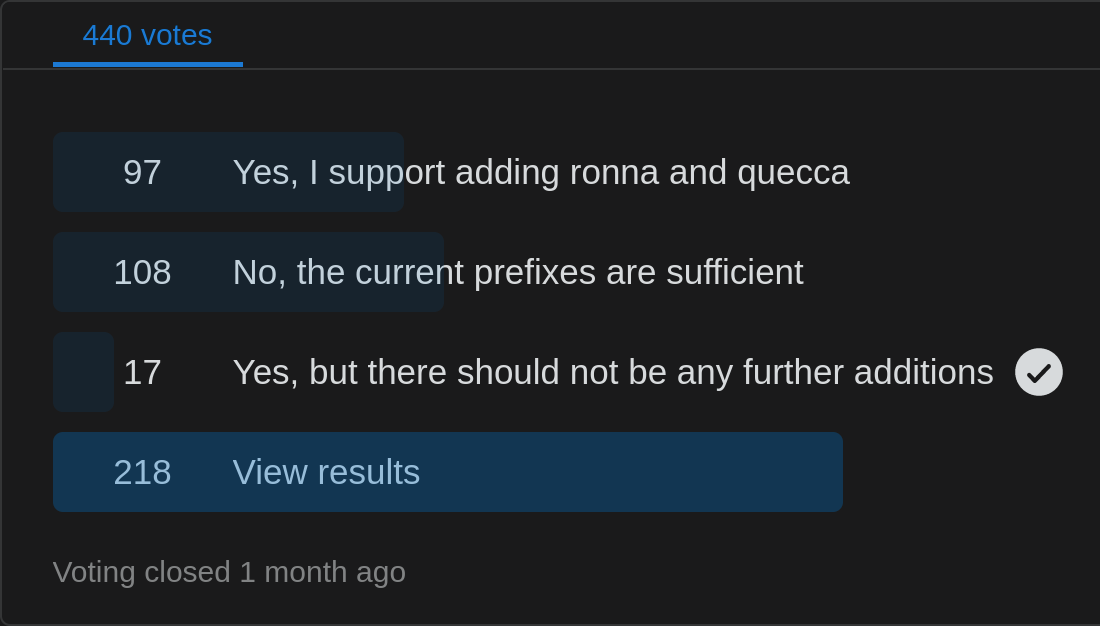Should Ronna and Quecca be added to the SI? A rant

I recently came across this article on reddit’s /r/metric and posted a poll asking the same question. The article describes a proposal forwarded to the BIPM (international committee overseeing the SI) to add two prefixes following yotta (and yocto), expanding the system to cover \(10^{-30}\) to \(10^{30}\). The rationale is to prevent unofficial units like “geobyte” from taking hold when the amount of data stored by humans exceeds a yottabyte. I like the round number of \(10^{30}\) with ten engineering notation prefixes in either direction; it’s similarly pleasing as the periodic table ending with a full row and a noble gas. Of course, the periodic table is descriptive of the universe and her disdain for heavy elements, while the SI is a prescriptive, arbitrary system made on Earth by humans.

Doesn’t it just look so… complete?
The reason I’m hesitant to celebrate the potential new prefixes is fear of a slippery slope that dilutes the entire purpose of prefixes. What’s stopping the BIPM from greenlighting so many new prefixes in the name of snuffing out “unofficial names for numbers,” that they become difficult to memorize and use colloquially? Once a prefix is added to the SI, Pandora’s Box is open and there’s no putting the genie back into the lamp; centuries-old warts like the candela and kilogram are still actively used and supported.
If unofficial names for numbers are a huge problem that requires expanding the system, why stop at \(10^{30}\)? You could come up with named prefixes up to \(10^{101}\) and have an “official” way to count to Googol, or the number of particles in the universe in engineering notation. At some point, scientific notation takes over and there’s no stopping scientists from coming up with convenient units for their particular field, like the ångström, barn, or hectare.
Last modified: 2022-08-17